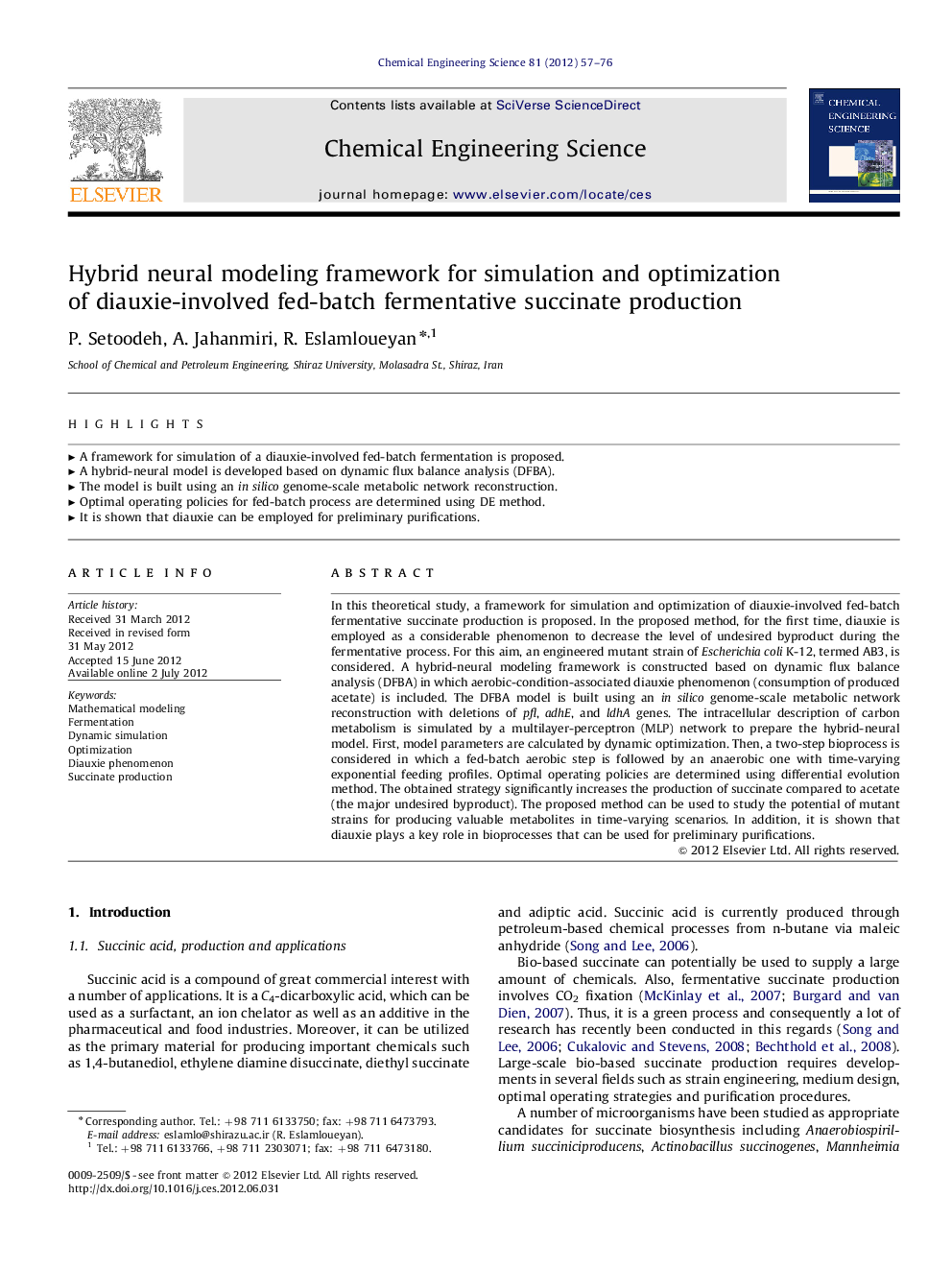| Article ID | Journal | Published Year | Pages | File Type |
|---|---|---|---|---|
| 155505 | Chemical Engineering Science | 2012 | 20 Pages |
In this theoretical study, a framework for simulation and optimization of diauxie-involved fed-batch fermentative succinate production is proposed. In the proposed method, for the first time, diauxie is employed as a considerable phenomenon to decrease the level of undesired byproduct during the fermentative process. For this aim, an engineered mutant strain of Escherichia coli K-12, termed AB3, is considered. A hybrid-neural modeling framework is constructed based on dynamic flux balance analysis (DFBA) in which aerobic-condition-associated diauxie phenomenon (consumption of produced acetate) is included. The DFBA model is built using an in silico genome-scale metabolic network reconstruction with deletions of pfl, adhE, and ldhA genes. The intracellular description of carbon metabolism is simulated by a multilayer-perceptron (MLP) network to prepare the hybrid-neural model. First, model parameters are calculated by dynamic optimization. Then, a two-step bioprocess is considered in which a fed-batch aerobic step is followed by an anaerobic one with time-varying exponential feeding profiles. Optimal operating policies are determined using differential evolution method. The obtained strategy significantly increases the production of succinate compared to acetate (the major undesired byproduct). The proposed method can be used to study the potential of mutant strains for producing valuable metabolites in time-varying scenarios. In addition, it is shown that diauxie plays a key role in bioprocesses that can be used for preliminary purifications.
► A framework for simulation of a diauxie-involved fed-batch fermentation is proposed. ► A hybrid-neural model is developed based on dynamic flux balance analysis (DFBA). ► The model is built using an in silico genome-scale metabolic network reconstruction. ► Optimal operating policies for fed-batch process are determined using DE method. ► It is shown that diauxie can be employed for preliminary purifications.
